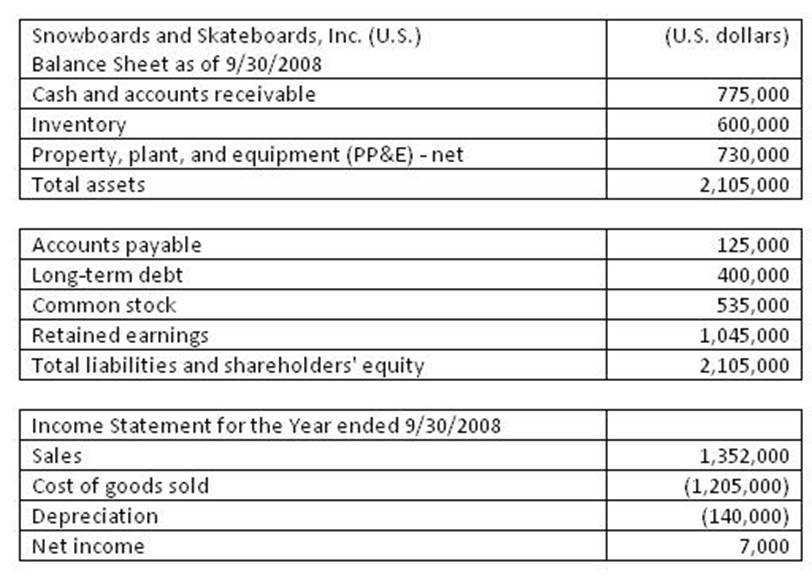- All Exams Instant Download
Suppose the parent uses the all-current method to translate the subsidiary for fiscal 2008. Will return on assets and net profit margin in U.S. dollars before translation be the same as, or different than, the translated Canadian dollar ratios?
SIMULATION
Ota L’Abbe, a supervisor at an investment research firm, has asked one of the junior analysts, Andreas Hally, to draft a research report dealing with various accounting issues.
Excerpts from the request are as follows:
• “There’s an exciting company that we’re starting to follow these days. It’s called Snowboards and Skateboards, Inc. They are a multinational company with operations and a head office based in the resort town of Whistler in western Canada. However, they also have a significant subsidiary located in the United States."
• "Look at the subsidiary and deal with some foreign currency issues including the specific differences between the temporal and all-current methods of translation, as well as the effect on financial ratios."
• "The attached file contains the September 30, 2008, financial statements of the U.S. subsidiary. Translate the financial statements into Canadian dollars in a manner consistent with U.S. GAAP."
The following are statements from the research report subsequently written by Hally:
Statement 1: Subsidiaries whose operations are well integrated with the parent will use the all-current method of translation.
Statement 2: Self-contained, independent subsidiaries whose operating, investing, and financing activities are primarily located in the local market will use the temporal method of translation.

Other information to be considered
• Exchange rates (CAD/USD)

• Beginning inventory for fiscal 2008 had been purchased evenly throughout fiscal 2007. The company uses the FIFO inventory value method.
• Dividends of USD 25,000 were paid to the shareholders on June 30, 2008.
• All of the remaining inventory at the end of fiscal 2008 was purchased evenly throughout fiscal 2008.
• All of the PP&E was purchased, and all of the common equity was issued at the inception of the company on October 1, 2004. No new PP&E has been acquired, and no additional common stock has been issued since then. However, they plan to purchase new PP&E starting in fiscal 2009.
• The beginning retained earnings balance for fiscal 2008 was CAD 1,550,000.
• The accounts payable on the fiscal 2008 balance sheet were all incurred on June 30, 2008.
• The U.S. subsidiary’s operations are highly integrated with the main operations in Canada.
• The remeasured inventory for 2008 using the temporal method is CAD 810,000.
• All monetary asset and liability balances are the same as they were at the end of the 2007 fiscal year, except that long-term debt was USD 467,700.
• Costs of goods sold under the temporal method in 2008 is CAD 1,667,250.
Suppose the parent uses the all-current method to translate the subsidiary for fiscal 2008. Will return on assets and net profit margin in U.S. dollars before translation be the same as, or different than, the translated Canadian dollar ratios?

Answer: Return on assets prior to translation will be different than the ratio after translation because the numerator (net income) is translated at the average rate, and the denominator (assets) is translated at the current rate using the all-current method.
Net profit margin will be the same because both the numerator (net income) and the denominator (sales) are translated at the average rate using the all-current method. (Study Session 6, LOS 23-d)
Latest CFA Level 2 Dumps Valid Version with 713 Q&As
Latest And Valid Q&A | Instant Download | Once Fail, Full Refund
Subscribe
Login
0 Comments
Inline Feedbacks
View all comments

